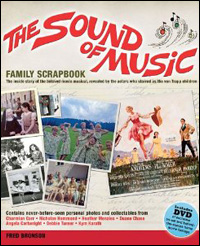
*
When you're a Jet you're a Jet all the way, from…well, you know the rest. The original Jets, who stormed Broadway in the 1957 production of Jerome Robbins' West Side Story, included some veteran dancers and a couple of guys better known for their other musical theatre activities (namely director-lyricist Martin Charnin and director-choreographer Grover Dale). But the original Jets dancers of West Side exist today — as a group — solely in those black and white Fred Fehl production photos.
The Hollywood Jets, though, were and are indeed fated to stay Jets to their last dyin' day. Drawn together in 1961, the screen group was a mixed lot. Some were Broadway originals or replacements; some were from the tour or London company; a couple were from Robbins' 1954 musical, Peter Pan; and others simply wandered in and auditioned. Robbins — who was fired during filming — and co-director Robert Wise spread them gloriously across the wide screen, with close-ups as they danced and fought and even (in "Officer Krupke") clowned.
And there they remain, today, as the movie celebrates its 50th anniversary with a deluxe, high definition Blu-ray. These guys are mostly in their mid-70s, yes; but they are still recognized by civilians old and young. Dancers age well, mostly. Bert Michaels, a non-Robbins dancer just out of the national tour of The Music Man who was cast as Snowboy, tells how he is "kind of caught forever, 23 looking 16 being 73."
The surviving Hollywood Jets and Sharks (and their "girls") have remained a close-knit group. With the approach of that 50th anniversary, 12 of them joined together for "Our Story: Jets & Sharks, Then and Now" as told by Cast Members from the Movie [Outskirts Press]. This is one of those homemade, write-and-publish-it-yourself affairs, with everyone working independently of each other and no editor in sight. It is also illuminating, and in a way mesmerizing. A book about filming the dance sequences in "West Side Story" might sound like it will be of intermittent interest; that's how it sounded to me, anyway. But that's not what this is. "Our Story" is not just about the movie; it is the story of these dancers, professional show dancers. They all happened to be excellent, of course; otherwise Robbins wouldn't have used them. But that's beside the point. We get nonstop tales of "West Side Story," yes, and many of them are told again and again by different people with different viewpoints. Robbinsian Rashomon, you might call it. (There are four distinct explanations of how the Jet girl Taffy Paul was fired, with everyone agreeing that she was talented and everyone glad that she found success once she changed her name to Stefanie Powers.) But we also get the essence of what it was to be a top dancer in this time and place, and community. So there's so much more here than just "West Side."
As an aside, I here refer to it as Robbins' "West Side Story" because that's how the dancers refer to it; there is scarcely a mention of Bernstein or Sondheim or "Arthur Lawrence" (as he's called in this unedited tome). Betty Walberg, the rehearsal pianist Robbins imported from Broadway, gets more attention than the three authors combined.
The Jets involved are Tony Mordente, Bert Michaels, David Bean, Robert Banas and Harvey Hohnecker. (The latter soon changed his name to Evans, and can still be found on the West Side kicking up his heels). Each gives compelling accounts. These begin with Mordente, who describes what it was like when he got the film job but his then-wife — Chita Rivera, who created the role of Anita — didn't. Mordente, one of Robbins' favorite dancers, was pressured to supervise the filming of the remaining dances when Robbins was fired.
Michaels, Bean, Banas and Evans all provide equally interesting tales; separately and combined, we truly get a picture of what it was like to be a Robbins dancer. There is also a brief account from Russ Tamblyn, who played Riff. You might think that general interest would flag thereafter, as we hear from Sharks Eddie Verso and Nick Covacevich, Jet girls Gina Trikonis and Carole D'Andrea, and Shark girls Joanne Miya and Maria Henley. But hey — these were Robbins dancers, and we learn that Robbins seemed to delight in testing each of them, every minute of every day. During the filming, he put them through an 8 AM ballet class; you had to be there, and you had to dance.
It is a Jet girl who has one of the most compelling stories. A 19-year-old from Altoona, PA, she wandered into the non-Equity dance call for the 1957 Broadway production and was cast in the last remaining role. (During the day-long audition she was repeatedly pestered by a man who said he was writing a movie for Otto Preminger and wanted her to try out for the lead — who turned out to be the aforementioned Arthur Lawrence [sic].) She left the call with the WSS job, and with the full admiration of Robbins.
Carole D'Andrea goes on to tell us about the Broadway run, and about getting cast in the film, and about teaching Rita Moreno the choreography for "America." (The Broadway number was choreographed by Peter Gennaro, so Robbins was unfamiliar with Chita's steps.) She also tells us how she met an actor taking jazz class at Luigis, and how he persistently flew to the coast each weekend during filming even though he was a budding Broadway star. They had their first child just as her "West Side" movie and his How to Succeed in Business Without Really Trying opened. In one of those small-circle coincidences, their daughter, Robin Morse, wound up playing Chita's daughter in Bring Back Birdie.
The other Jet girl, Gina Trikonis — an early replacement in the Broadway company — has an equally interesting tale to tell, with some keen and uncharacteristic insight into Big Daddy (as she calls JR). The scowling Robbins sitting in the rehearsal hall during breaks, eyes twinkling as he reads that day's "Peanuts" strip in the paper?
So don't let the written-on-the-kitchen-table aura scare you away. "Our Story: Jets and Sharks" makes compelling reading. And now I've got to watch the film again, and then those dancer interviews included as bonus features on the new release.
Passionate about theatre books? See what the Playbill Store has on its shelves.
 |
||
| Cover art for "The Sound of Music Family Scrapbook" |
To make this even more of a holiday for Sound of Music fans, there is a DVD with the kid's own home movies of the shoot. "The Sound of Music Family Scrapbook" is an altogether interesting compilation; I don't know that I've ever seen anything quite like it. Although if forced, I would have to admit that I'm more of a West Side type of guy.
*
 |
||
| Cover art for "Dropped Names: Famous Men and Women As I Knew Them" |
He has now written his first book, "Dropped Names: Famous Men and Women As I Knew Them" [HarperCollins], and what is there possibly to say except that Langella immediately pulls you in with the twinkle in his unseen eye? It is no surprise that he is a prime storyteller; you kind of assume that he must be. But who knew the range of his experiences? He begins with the tale of a little brunch at which he found himself unexpectedly present one Sunday afternoon in the summer of 1961, when he was acting in children's plays at the Cape Playhouse in Dennis, MA. Turns out the girl who took him home was the daughter of Bunny Mellon, step-daughter of philanthropist Paul Mellon; the five guests — whose names Langella is thus forced to drop — were the President (in bright yellow pants) and Jackie, Noel Coward, Adele Astaire ("I'm Delly") and aspiring actor Frank. Who looked on in awe through the afternoon, culminating with Delly and Jack doing a soft-shoe while Noelie played "A Room with a View."
And that's just the beginning. "Dropped Names" is filled with fascinating, candid and not necessarily positive glances at show folks, with politicians and society types mixed in. (Including "a fair amount of forks to the eye and knives to the throat," as Langella warns us.) Sixty-four portraits, with most including multiple celebrities. Delicious morsels, they are.
I once spent a couple of months with Frank, night after night in his dressing room. (I was managing a play that he produced, and he insisted on discussing business after the curtain came down.) I quickly realized that here was the perfect Henry Higgins, if only someone would produce a revival of My Fair Lady. A performance we never got to see, alas. I found him to be intelligent, sharp and winningly amusing — although not quite so amusing as the Langella on the pages of "Dropped Names."
(Steven Suskin is author of the recently released updated and expanded Fourth Edition of "Show Tunes" as well as "The Sound of Broadway Music: A Book of Orchestrators and Orchestrations," now available in paperback, "Second Act Trouble" and the "Opening Night on Broadway" books. He also pens Playbill.com's On the Record and DVD Shelf columns. He can be reached at [email protected].)
*
Passionate about theatre books? See what the Playbill Store has on its shelves.










